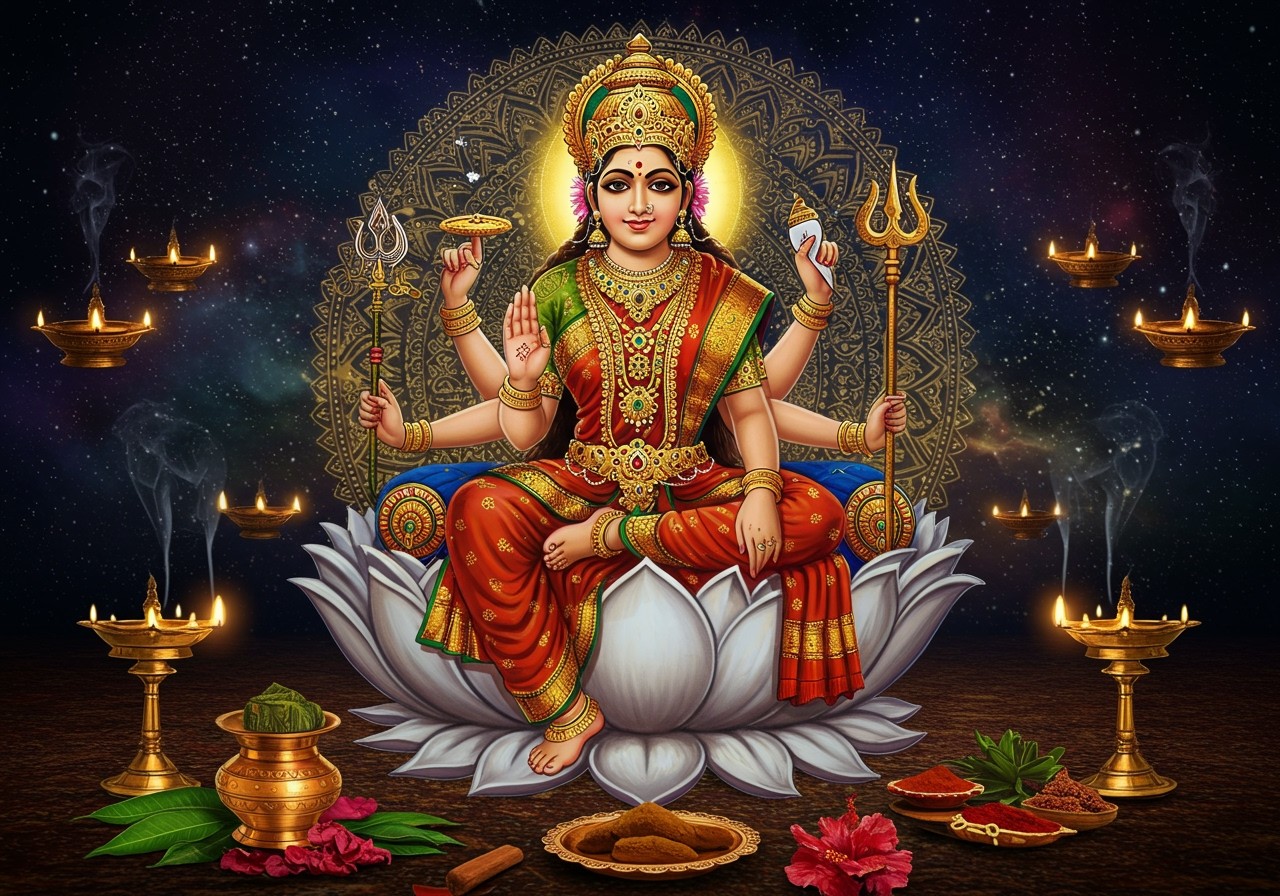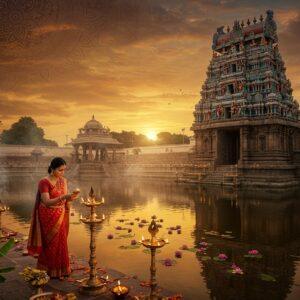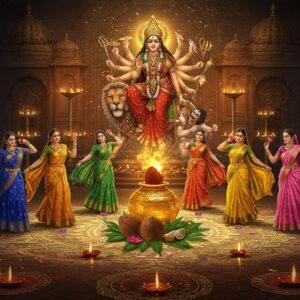Celebrating Goddess Parvati: Festivals, Rituals, and Traditions

In Hindu mythology, Parvati, also known as Uma and Gauri, holds immense significance as the goddess of power, energy, nourishment, love, beauty, devotion, and motherhood. As Lord Shiva’s consort, she plays a vital role in numerous religious and cultural observances. Along with Lakshmi and Sarasvati, she forms the revered Tridevi. Celebrating Parvati is a cherished tradition, and understanding her significance enriches our connection to Hindu culture.
Explore our divine collection of Parvati statues and puja essentials at poojn.in. We offer a wide variety of products to help you honor the goddess.
Parvati’s Origins and Significance
Parvati’s story begins as the reincarnation of Sati, born to the mountain king Himavat and queen Mena. This symbolizes the rebirth of divine feminine energy, a core concept in Hindu belief. Her birth is celebrated as Parvati Jayanti, observed on the Tritiya Tithi of the Shukla Paksha in the month of Ashadha. This occasion underscores her divine presence and the importance of feminine power.
Festivals Honoring Parvati
Numerous festivals honor Goddess Parvati, each with its own unique significance. These celebrations offer opportunities for devotion, reflection, and community bonding.
- Teej: Celebrated primarily by women in northern and western India and Nepal, Teej commemorates Parvati’s reunion with Shiva, welcomes the monsoon season, and celebrates marital bliss. It encompasses three forms: Hariyali Teej (Shravana Teej), Kajari Teej (during peak monsoon), and Hartalika Teej (honoring Parvati’s penance). Teej celebrations include swings, singing, dancing, prayers, and often fasting.
- Gowri Habba (Gauri Festival): Observed in Maharashtra and Karnataka, this festival venerates Parvati as the goddess of harvest and protector of women. It is closely linked to Ganesh Chaturthi. In Rajasthan, similar celebrations take place during the Gangaur festival. This festival demonstrates the diverse ways Parvati is honored across different regions.
- Navaratri: This nine-night festival celebrates various manifestations of Parvati with great fervor, particularly in eastern India and Gujarat. It is a time for fasting, prayer, and celebrating the divine feminine. Each night holds a different significance, highlighting a specific aspect of Parvati’s power.
- Kethara Gauri Vritham: Celebrated on the new moon day of Diwali in Tamil Nadu and Andhra Pradesh, this festival involves married women fasting for their family’s well-being. It represents the dedication of women to their families and their devotion to Parvati.
- Thiruvathira: Observed in Kerala and Tamil Nadu, Thiruvathira marks Parvati’s reunion with Shiva after her penance. Women perform a special dance called Thiruvathirakali and sing traditional folk songs about the goddess. This festival highlights the devotion and perseverance of Parvati in her love for Shiva.
- Maha Shivaratri: While dedicated primarily to Lord Shiva, this festival also acknowledges Parvati’s importance. Devotees fast, visit Shiva temples, and perform pujas. Parvati’s presence is essential in the worship of Shiva, emphasizing their inseparable bond.
- Parvati Peaking Festival: A more contemporary celebration held in the Parvati Valley of Himachal Pradesh, this festival adds a modern twist to traditional celebrations. It showcases how Parvati’s influence extends beyond traditional practices.
Poojn.in offers a curated selection of puja kits specifically for festivals like Teej and Gowri Habba. Visit our blog for more information.
Rituals and Practices
Beyond grand festivals, numerous rituals honor Parvati in daily life and during special occasions. These practices offer a personal connection to the goddess.
- Daily Worship: Devotees offer incense sticks, flowers, and chant mantras to Parvati daily. This simple yet profound practice maintains a constant connection with the divine.
- Marriage Ceremonies: Parvati’s blessings are invoked during weddings, symbolizing marital harmony and prosperity. Specialized puja items and idols are used to honor her presence.
- Fasting: Devotees observe fasts during festivals like Teej and Jaya Parvati Vrat, seeking Parvati’s blessings and demonstrating their devotion.
- Offerings: Flowers, sweets, fruits, and Shringaar items (saree, sindoor, mehendi, bangles, haldi) are offered to Parvati as tokens of love and respect.
- Chanting: Hymns and mantras dedicated to Parvati invoke her divine energy and blessings.
- Shiva-Parvati Abhishekam: This combined puja involves the ritualistic bathing of the Shiva Lingam and Parvati’s idol, accompanied by Vedic chants, symbolizing purification and devotion.
- Gauri Puja: Dedicated to Maa Parvati (Gauri), this puja seeks blessings for marital happiness, fertility, and well-being.
- Jaya Parvati Vrat: Observed by unmarried girls, this vrat involves rituals like idol decoration, offering sweets, and reciting mantras to pray for a suitable life partner. This practice signifies the importance of Parvati in guiding young women towards fulfilling lives.
Enhance your daily puja with premium quality incense sticks and dhoop from poojn.in. We also offer a wide range of essential puja samagri for your home mandir.
The Enduring Legacy of Parvati
Parvati’s influence pervades Indian culture, strengthening community bonds and enriching spiritual life. Her festivals and rituals are not merely religious observances; they are expressions of devotion, cultural identity, and a connection to ancient traditions. By embracing these practices, we honor Goddess Parvati and ensure the continuity of a rich cultural heritage.


